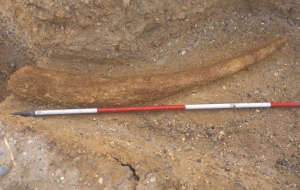Interpretation - Digging up the Stone Age
-
The Swanscombe Skull
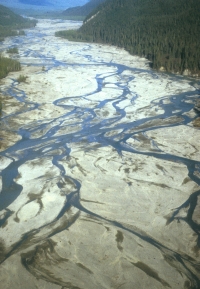
Picture of braided river floodplain [Photo Richard Bates]
- Making stone tools
Digging up the Stone Age
The evidence of our prehistoric past is preserved in patches of sediment surviving from the Ice Age.
Climatic changes during this period led to formation of various types of deposit — for instance: river gravels, landslips and talus deposits at the foot of sea cliffs.
Sometimes Palaeolithic activity was taking place at a location where sediment was forming, and evidence became incorporated in the deposit.
Most deposits were then eroded away by later geological events, but occasional patches survive, and these sometimes contain Palaeolithic evidence.
Sometimes the evidence is close beneath the present ground surface, where further deposition has not occurred, or where subsequent erosion has led to the ancient sediments being exposed.
Often, however, it is more deeply buried, under five, ten, or even up to twenty, metres of ancient river gravel, cliff collapse or mass slope movement deposits.
Excavation of Palaeolithic sites usually involves heavy duty machinery!
Although care has to be taken to avoid damaging fragile evidence once the right layer is exposed - and the usual toothpicks and brushes can be deployed.
One of the commonest sources of Palaeolithic evidence is ancient river gravels.
Rivers provided water to drink, attracted animals to hunt and exposed raw material for stone tool manufacture.
Any evidence of human activity would then quickly have become incorporated in the river deposits, leading to its preservation.
Stone artefacts are resistant to decay, and so form the bulk of the evidence.
Faunal and environmental remains are only rarely preserved, which makes sites where they are present particularly important.
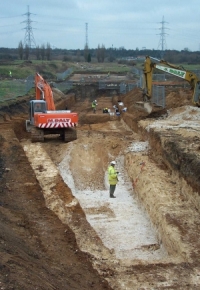
Palaeolithic excavation for the Channel Tunnel Rail Link [Photo Rail Link Engineering]
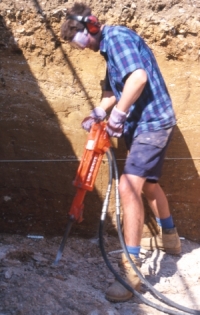
Drilling through calcrete at Red Barns [Photo Francis Wenban-Smith]
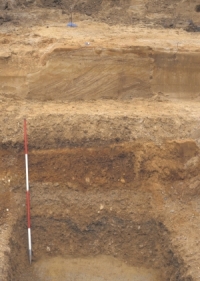
River gravels at Swanscombe [Photo Francis Wenban-Smith]
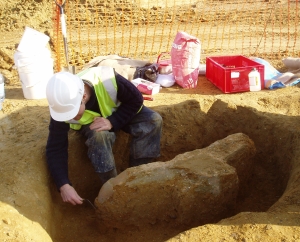
Wild aurochs skull [Photo Francis Wenban-Smith]
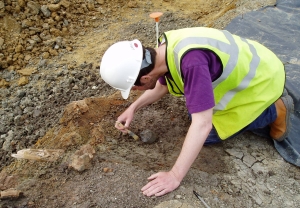
Excavation of 400,000 year old flint core [Photo Francis Wenban-Smith]
